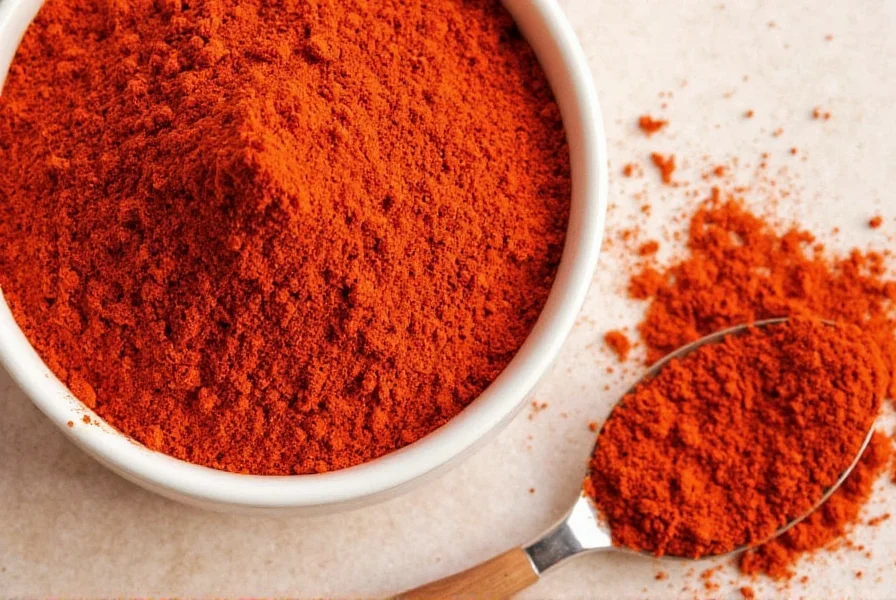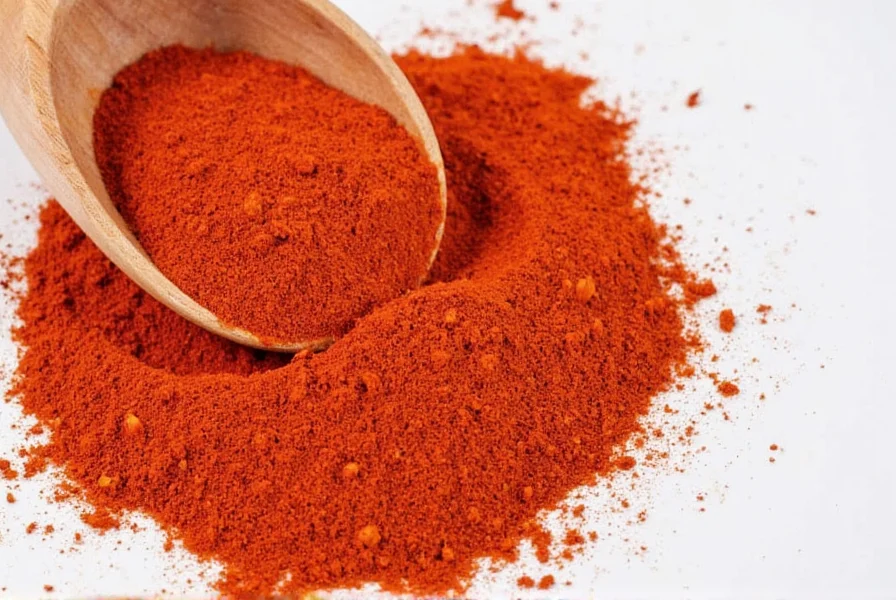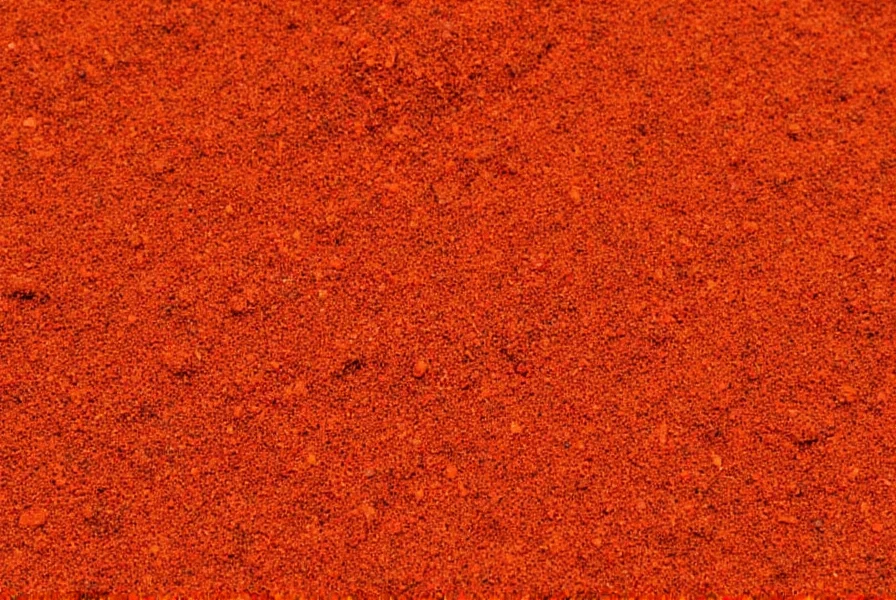When you're in the middle of cooking and realize you've run out of paprika, don't panic. Many common pantry staples can effectively replace this versatile spice, whether you need its distinctive color, mild sweetness, smoky depth, or subtle heat. Understanding paprika's unique characteristics is crucial for selecting the right alternative that won't compromise your recipe's integrity.
Understanding Paprika's Flavor Profile
Paprika isn't a one-size-fits-all spice. It comes in several varieties, each with distinct properties that affect which substitute works best:
- Sweet paprika - Mild, slightly sweet with earthy notes (most common type)
- Smoked paprika - Adds deep smoky flavor (essential for Spanish dishes)
- Hot paprika - Contains cayenne or other hot peppers for heat
Before choosing a substitute, determine which characteristic matters most for your recipe: color, mild flavor, smokiness, or heat. This distinction makes all the difference between a successful substitution and a culinary disappointment.
Top Paprika Alternatives by Category
For Color Replacement
When paprika's vibrant red hue is the primary requirement (like in deviled eggs or potato salad), these alternatives work best:
- Tomato paste - Use 1 teaspoon tomato paste per ½ teaspoon paprika. Dilute with a bit of water if needed. Best for dishes where slight tomato flavor complements the recipe.
- Beet powder - Provides intense red color without altering flavor significantly. Use sparingly (¼ teaspoon beet powder per ½ teaspoon paprika).
- Pimento powder - Closer to sweet paprika's flavor profile while providing similar color.
For Mild Flavor Replacement
When you need paprika's characteristic mild, slightly sweet earthiness:
- Aleppo pepper - Offers similar mild heat with complex fruitiness. Substitute ¾ teaspoon Aleppo pepper for 1 teaspoon sweet paprika.
- Ancho chili powder - Made from dried poblano peppers, providing mild heat and earthy sweetness. Use ¾ teaspoon ancho powder per 1 teaspoon paprika.
- Marash pepper - Turkish pepper with moderate heat and rich flavor. Substitute ½ teaspoon Marash for 1 teaspoon sweet paprika.
For Smoked Flavor Replacement
When replicating smoked paprika's distinctive campfire notes:
- Chipotle powder - Provides intense smokiness with significant heat. Use ¼ teaspoon chipotle powder per 1 teaspoon smoked paprika, adjusting for heat tolerance.
- Liquid smoke - Add 2-3 drops per teaspoon of smoked paprika required. Best combined with another mild spice like sweet paprika substitute.
- Smoked sea salt - Provides smokiness without heat. Use ½ teaspoon smoked salt per 1 teaspoon smoked paprika, reducing other salt in recipe.
For Heat Replacement
When you need paprika's subtle warmth or significant heat:
- Cayenne pepper - Much hotter than hot paprika. Use only ⅛-¼ teaspoon cayenne per 1 teaspoon hot paprika.
- Red pepper flakes - Provides similar heat with different texture. Substitute ½ teaspoon crushed flakes per 1 teaspoon hot paprika.
- Hot chili powder - Contains cayenne and other hot peppers. Use ¾ teaspoon hot chili powder per 1 teaspoon hot paprika.
| Alternative | Best For | Substitution Ratio | Flavor Notes |
|---|---|---|---|
| Tomato paste | Color replacement | 1 tsp paste = ½ tsp paprika | Slight tomato flavor, best in tomato-based dishes |
| Aleppo pepper | Mild flavor replacement | ¾ tsp = 1 tsp sweet paprika | Fruity, moderate heat, complex flavor |
| Chipotle powder | Smoked flavor replacement | ¼ tsp = 1 tsp smoked paprika | Intense smoke, significant heat |
| Cayenne pepper | Heat replacement | ⅛-¼ tsp = 1 tsp hot paprika | Much hotter, use sparingly |
| Ancho chili powder | Mild flavor replacement | ¾ tsp = 1 tsp sweet paprika | Earthy, slightly sweet, mild heat |
Choosing the Right Alternative for Your Recipe
Not all paprika substitutes work equally well in every dish. Consider these specific applications when selecting your alternative:
For Goulash and Stews
Traditional Hungarian goulash relies on sweet paprika's distinctive flavor. When substituting, combine ½ teaspoon ancho chili powder with a pinch of cumin for the closest approximation. For authentic Hungarian flavor without paprika, this combination provides the earthy sweetness while maintaining the dish's characteristic profile.
For Meat Rubs and Marinades
Smoked paprika is often used in dry rubs for its color and subtle smoke. When unavailable, create a replacement by mixing equal parts chipotle powder and sweet paprika substitute (like Aleppo pepper). The chipotle provides smoke while the milder pepper balances the heat. This paprika substitute for meat rubs maintains both visual appeal and complex flavor development during cooking.
For Deviled Eggs and Dips
The primary role of paprika in deviled eggs is visual contrast. For this application, tomato paste diluted with a bit of water provides the perfect red color without altering flavor. Alternatively, a tiny pinch of beet powder mixed with your filling creates vibrant color while remaining flavor-neutral. This paprika alternative for deviled eggs maintains presentation without compromising taste.
Common Substitution Mistakes to Avoid
Even experienced cooks make these paprika substitution errors:
- Using equal amounts of hotter spices - Cayenne and chipotle are significantly hotter than most paprikas. Always start with less and adjust to taste.
- Ignoring recipe context - A substitute that works in chili may ruin a delicate sauce. Consider the dish's other flavors.
- Overlooking color impact - Some substitutes dramatically change appearance. Test small batches first when presentation matters.
- Mixing multiple substitutes - Combining several alternatives often creates flavor confusion rather than a cohesive profile.
Creating Your Own Paprika Blend
For the most authentic paprika alternative, consider making your own blend. Combine:
- 1 tablespoon sweet red pepper powder (from dried bell peppers)
- ½ teaspoon garlic powder
- ¼ teaspoon onion powder
- Pinch of cumin (optional for Hungarian-style)
- Pinch of cayenne (optional for hot paprika)
This homemade paprika substitute captures the complex flavor profile while allowing you to control heat and smokiness levels. Store in an airtight container for up to six months.

When selecting the best paprika replacement for your specific needs, always consider the primary function paprika serves in your recipe. Whether you need its vibrant color, mild sweetness, smoky depth, or subtle heat, there's an appropriate substitute that will maintain your dish's integrity. The key to successful substitution lies in understanding which characteristic matters most and choosing accordingly.

What is the closest substitute for smoked paprika?
Chipotle powder is the closest substitute for smoked paprika, though it's significantly hotter. Use only ¼ teaspoon chipotle powder for every 1 teaspoon of smoked paprika required. For a milder option, combine liquid smoke (2-3 drops) with sweet paprika substitute like Aleppo pepper to achieve both the smoky flavor and appropriate heat level without overwhelming your dish.
Can I use chili powder instead of paprika?
Yes, but with important considerations. Standard chili powder contains additional spices like cumin and garlic that alter flavor. For sweet paprika replacement, use ¾ teaspoon mild chili powder per 1 teaspoon paprika. For hot paprika, use regular chili powder at the same ratio. For the most accurate paprika substitute using chili powder, look for pure ancho chili powder which has a closer flavor profile to sweet paprika without additional seasoning.
How do I substitute paprika in deviled eggs?
For deviled eggs where paprika's primary role is visual, tomato paste works best as a paprika alternative. Mix 1 teaspoon tomato paste with 1 teaspoon water and lightly brush or sprinkle on finished eggs. Alternatively, use a tiny pinch of beet powder mixed with your yolk filling for vibrant color without flavor alteration. Avoid spicy substitutes as they'll overpower the delicate egg flavor.
What's the difference between paprika and cayenne pepper?
Paprika ranges from sweet and mild to moderately hot, while cayenne pepper is significantly hotter. Sweet paprika measures 0-1,000 SHU (Scoville Heat Units) compared to cayenne's 30,000-50,000 SHU. When substituting cayenne for paprika, use only ⅛-¼ teaspoon cayenne per 1 teaspoon paprika. For recipes requiring paprika's color without heat, cayenne makes a poor substitute due to both excessive heat and different color properties.
Can I make my own paprika at home?
Yes, you can create a homemade paprika substitute by drying and grinding sweet red bell peppers. For best results, use fully ripe red bell peppers, slice thinly, and dehydrate until brittle (about 12-24 hours at 135°F/57°C). Grind to powder and store in an airtight container. For smoked paprika substitute, use a smoker to dry the peppers first. This DIY paprika alternative captures the authentic flavor but requires fresh peppers and proper drying equipment for optimal results.











 浙公网安备
33010002000092号
浙公网安备
33010002000092号 浙B2-20120091-4
浙B2-20120091-4